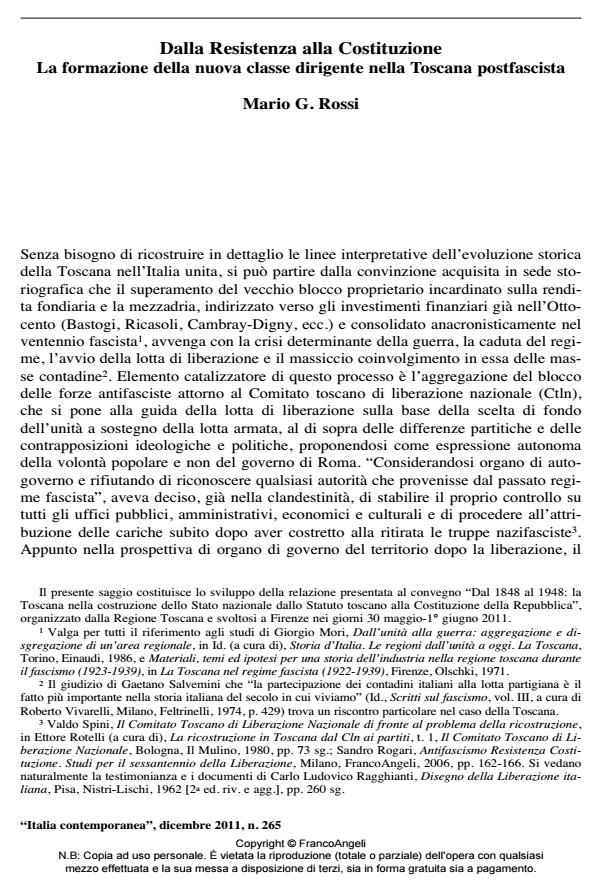From the Resistance to the Constitution. The formation of a new ruling class in post-Fascist Tuscany
Journal title ITALIA CONTEMPORANEA
Author/s Mario G. Rossi
Publishing Year 2012 Issue 2011/265
Language Italian Pages 15 P. 552-566 File size 115 KB
DOI 10.3280/IC2011-265002
DOI is like a bar code for intellectual property: to have more infomation
click here
Below, you can see the article first page
If you want to buy this article in PDF format, you can do it, following the instructions to buy download credits

FrancoAngeli is member of Publishers International Linking Association, Inc (PILA), a not-for-profit association which run the CrossRef service enabling links to and from online scholarly content.
Anti-Fascism and the Resistance heritage are not only constituent values of the new bloc of political and social forces replacing the one previously dominant in liberal and Fascist Tuscany, but indeed represent a truly original character deeply rooted in both the popular strata and the leading élite of contemporary Tuscany. To this result a crucial contribution was given by the CTLN (Comitato toscano di liberazione nazionale), whose members, proposing themselves as a unitarian organ of government, above all ideological and political counterpositions, directed the battle for local autonomies and regional government, while promoting a broad process of renovation in all sectors of the ruling classes, not only at political and administrative level, but also in the economy and in civil life. The wideness and rootedness of the anti-Fascist option would strengthen with time, thus stifling the revival of the most reactionary positions and interests and favoring a flexible and manifold dialectic among the political forces within the region.
Keywords: Anti-Fascism, CLN of Tuscany (CTLN), self-government, local autonomies, Tuscany region, renewal of the ruling classes
Mario G. Rossi, Dalla Resistenza alla Costituzione. La formazione della nuova classe dirigente nella Toscana postfascista in "ITALIA CONTEMPORANEA" 265/2011, pp 552-566, DOI: 10.3280/IC2011-265002